Clothing Model
Model Specifications:
- Must match the base body shape; modifications to body proportions are not allowed.
- Clothing Part:
- Clothing should strictly follow the dressing specifications to allow free switching and matching of different parts. Clothing is divided into four independent parts: upper body, lower body, shoes, and gloves, each of which must be created separately.
- Each clothing part (including skin material) supports up to three material balls.
- Double-sided display is not supported for materials. If a double-sided effect is needed, it must be achieved by duplicating the model.
- Skin Part:
- The base body UV and the topology at the clothing transition areas must remain unaltered.
- The skin and clothing sections must be assigned different material IDs.
Recommended Polygon Count:
The recommended polygon count includes the nude model parts merged with the clothing parts. Exceeding the polygon limit will prevent upload.
Upper body + Nude Body Gloves + Nude Hands Lower Body + Nude Legs Shoes + Nude Feet Max Triangles 10000 3500 4000 4000
Model Tips:
Delete the nude model covered by the clothing.
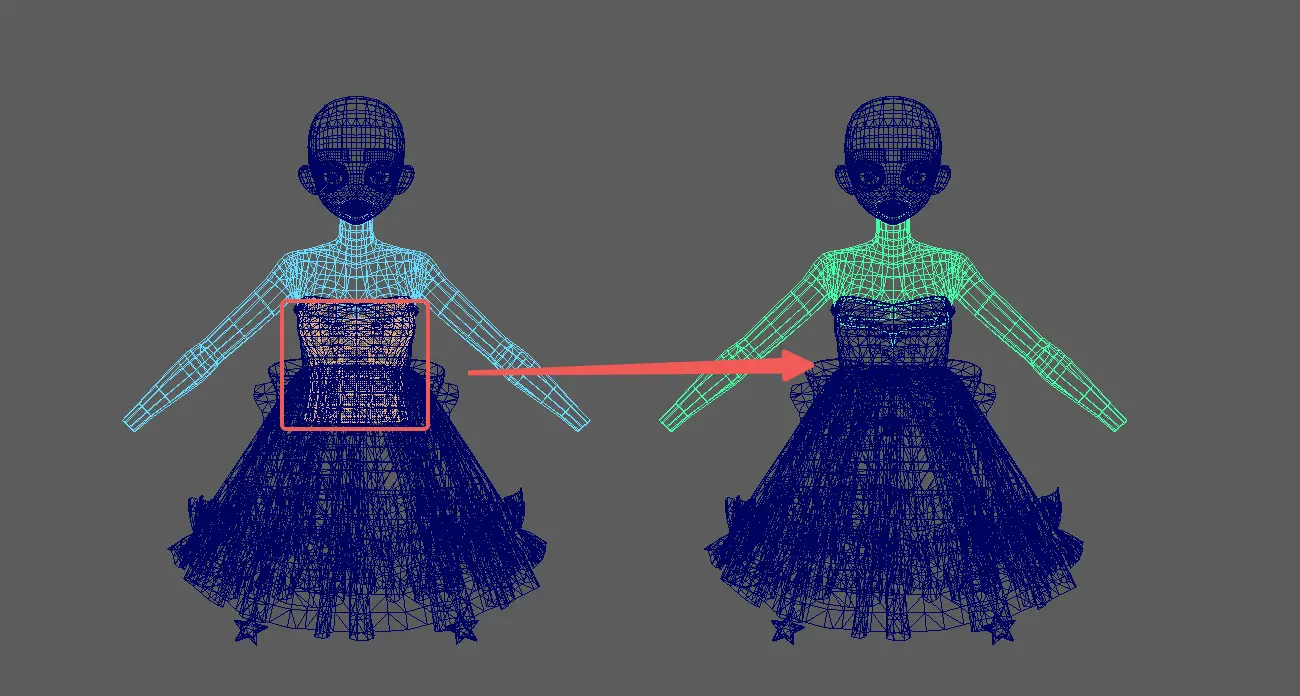
Clothing parts should align with the base wiring of the nude model to avoid intersections.
After completing the model, ensure that the vertex color Alpha is pure white; otherwise, the outline may display incorrectly in the game.
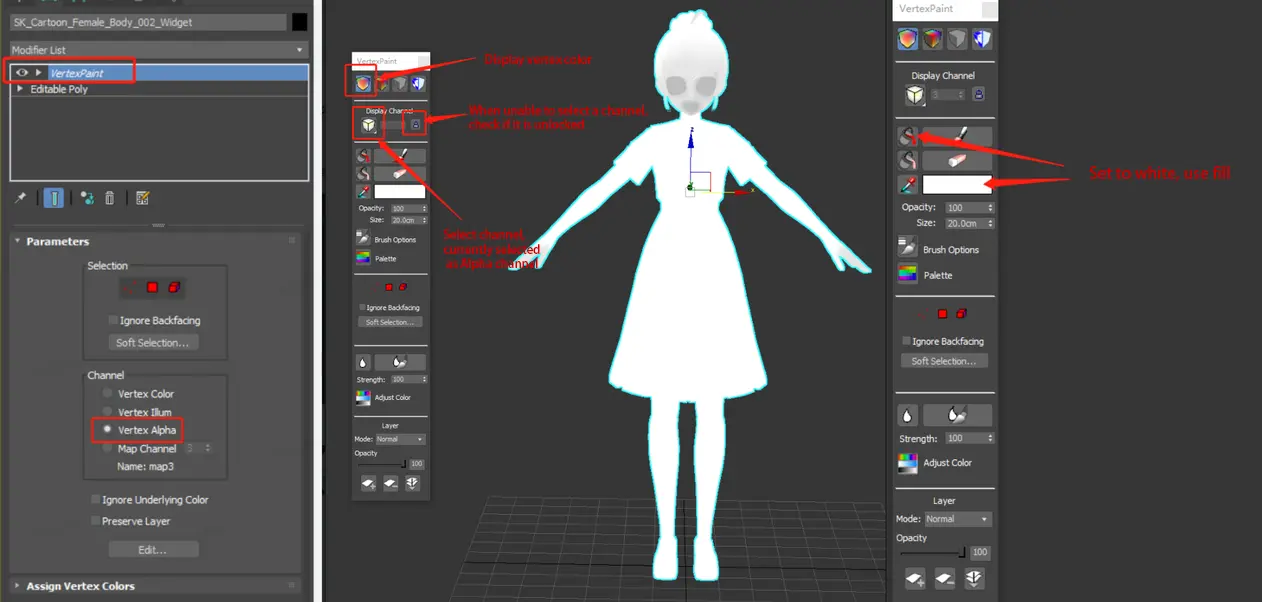
- Correctly setting the smoothing groups can enhance the model's aesthetics and make the lighting effects more natural.
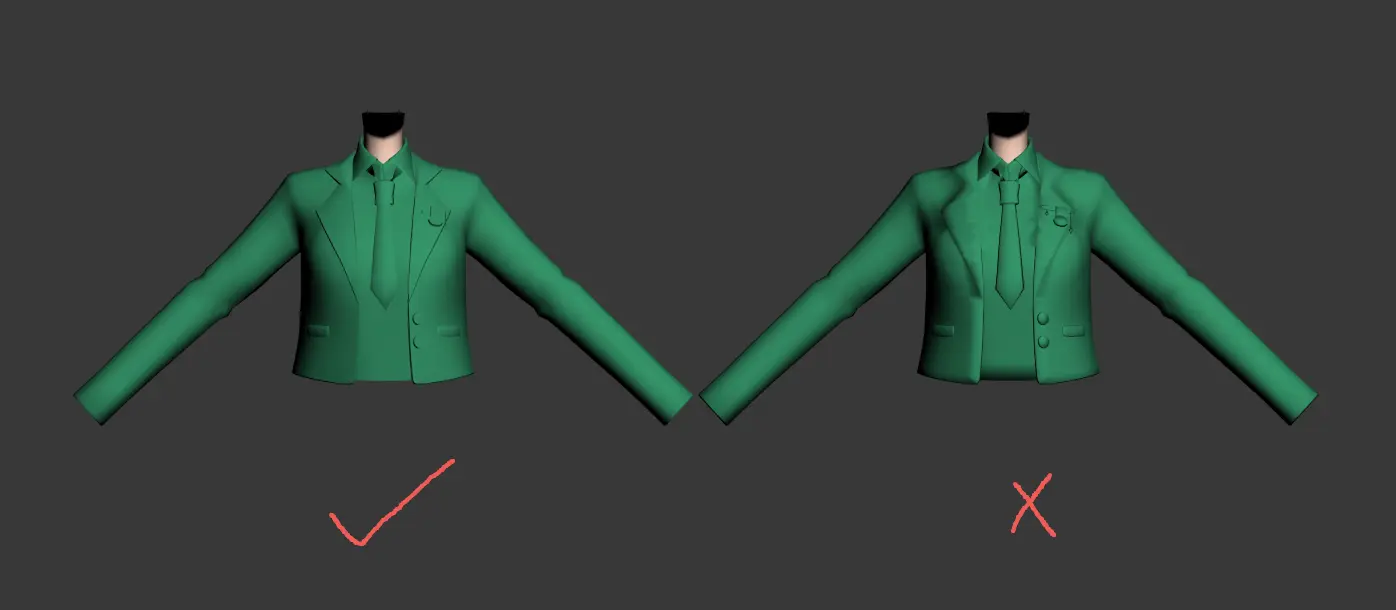
Dressing Specifications
- Clothing is divided into four independent parts: upper body, lower body, shoes, and gloves.
- Intersections near the dressing split lines are strictly prohibited, and the wiring must align with the nude model.
- As shown in the figure, the connection points between different models in the nude model file are the dressing split lines, which must not be adjusted. The rules are the same for both female and male models.
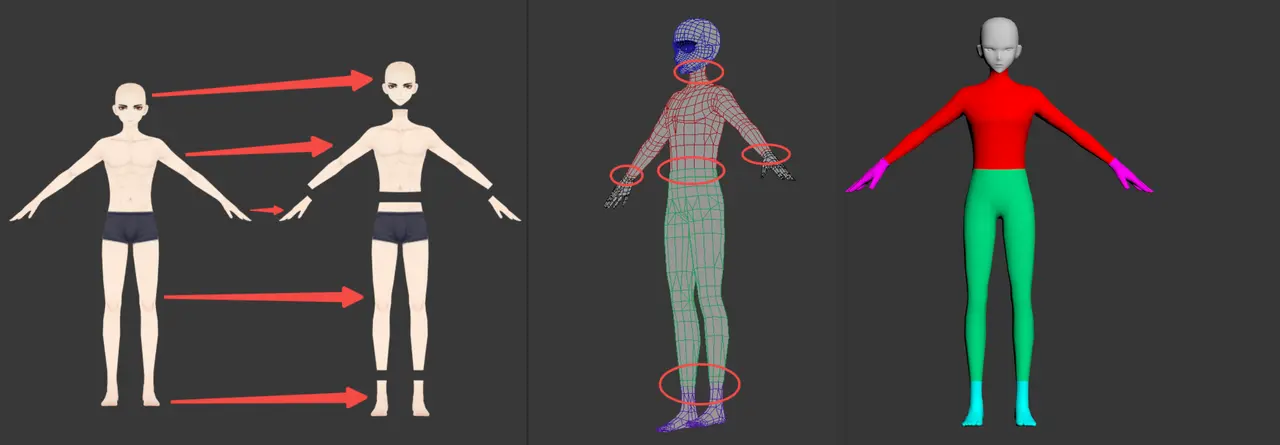
- If the clothing does not reach the nude model split line, the nude model should be used to fill the gap.
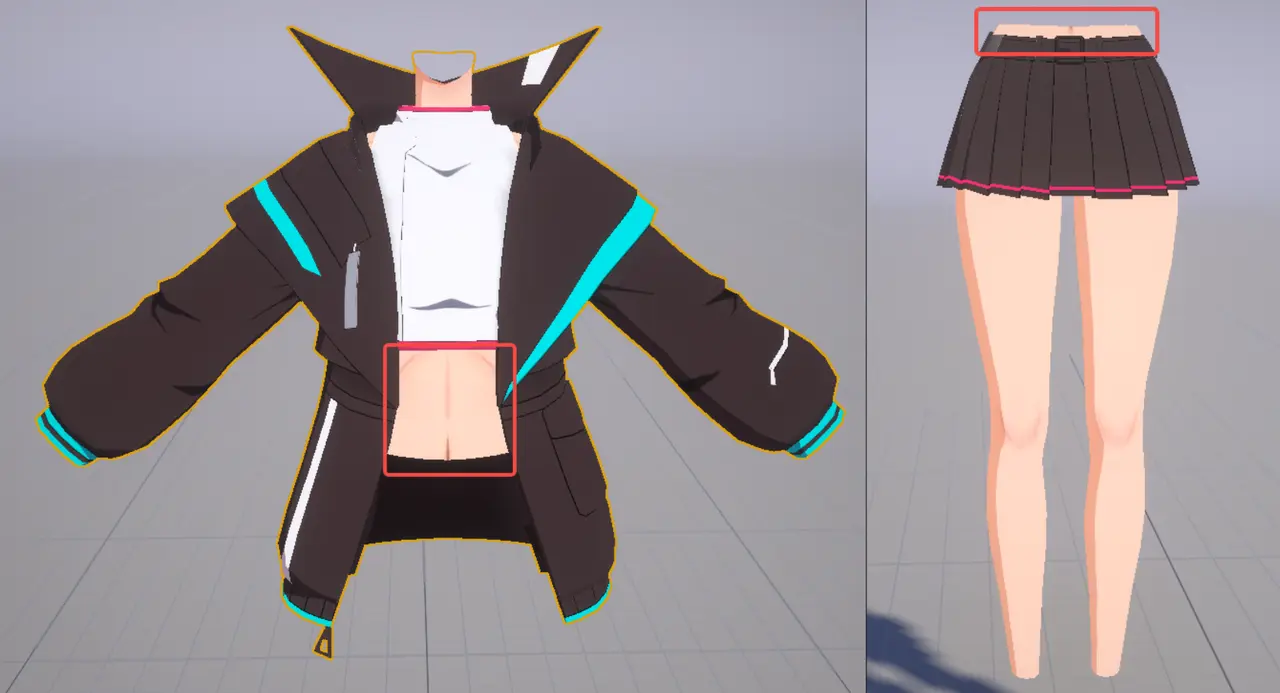
- When the nude model does not meet the clothing design, the nude model can be adjusted as needed without modifying the dressing split lines.
- For example: high heels. The bottom of the shoes must be above the plane coordinate 0.
- Without modifying the dressing split lines, the nude model can be adjusted to match the shoe design. Delete the nude model parts covered by the clothing.
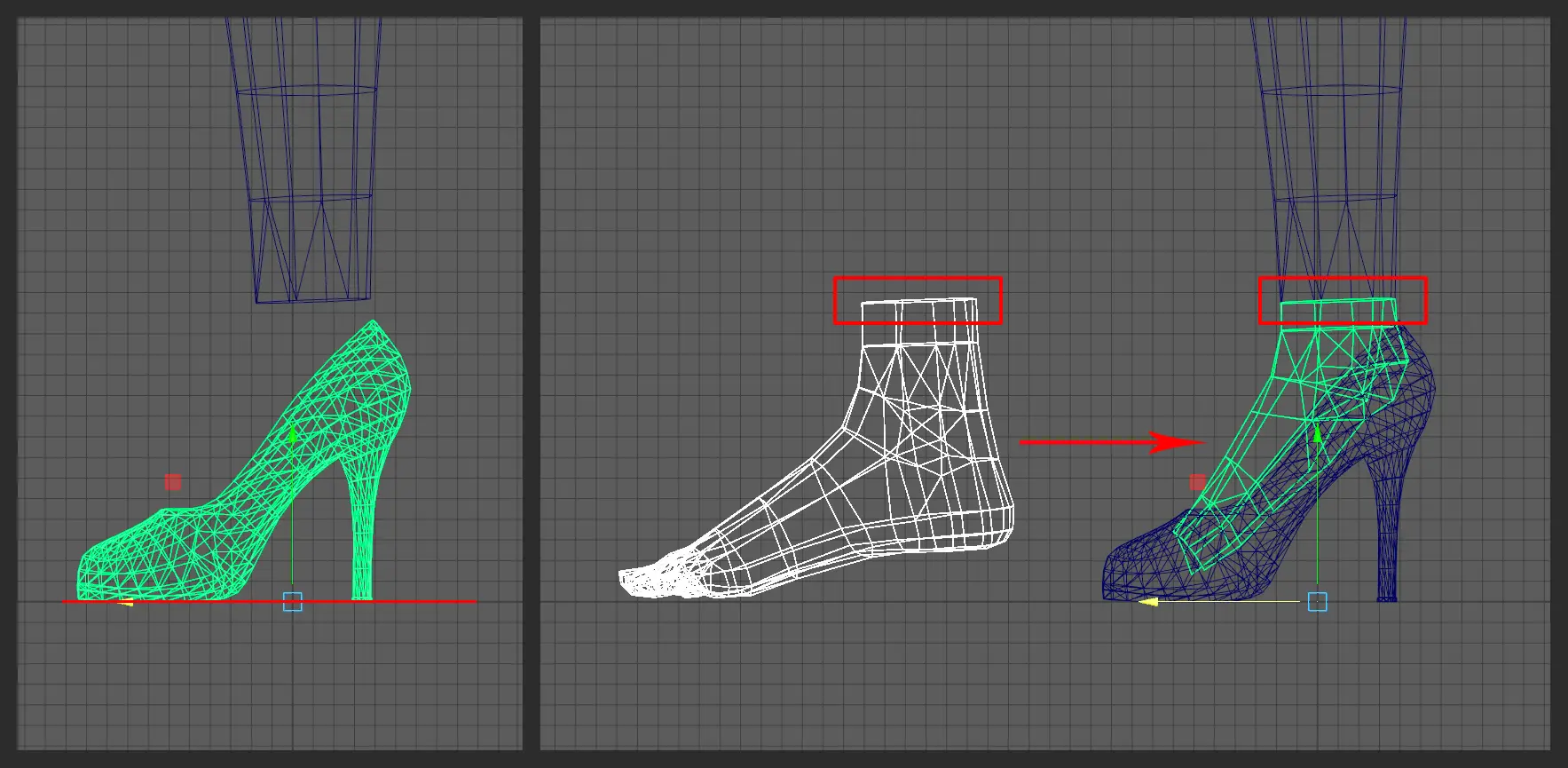
- When the clothing coverage exceeds the nude model split lines, the parts should be categorized based on the core position of the model.
- For example, although a dress may cover the lower body area, it is categorized as upper body clothing because its main part is concentrated on the upper body.
Eliminating Body Seams
- When the clothing and the base nude model have inconsistent Normals, visible seams will appear at the connection points between parts.
- The Edit Normal function in 3ds MAX can be used to unify the model normals.
- The connection points between dressing parts must match the model normals of the nude model.
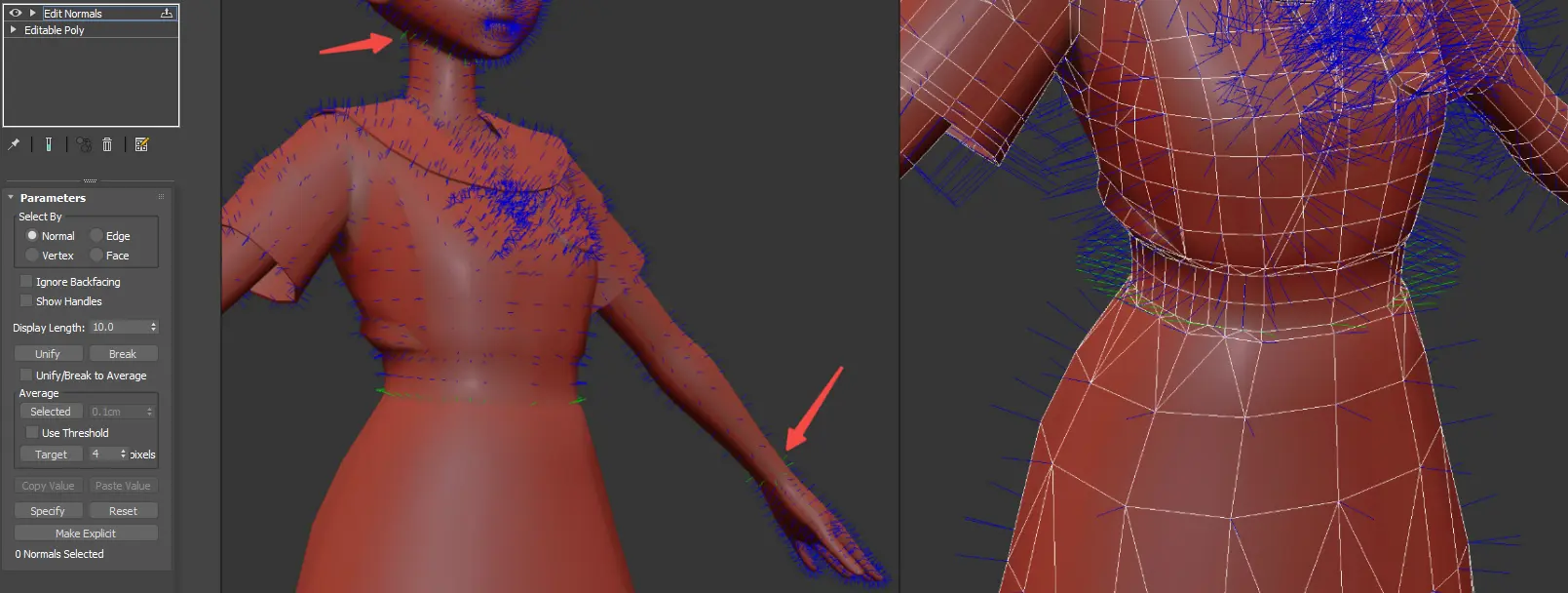
UV Specifications:
- UVs should be split according to different dressing parts (upper body, lower body, shoes, gloves).
- The nude model part should have a separate material ID, and its UV must not be modified. The nude model should be merged with the clothing model.
- UVs must be placed in the 1st quadrant, kept as complete as possible, and ensure sufficient border expansion.
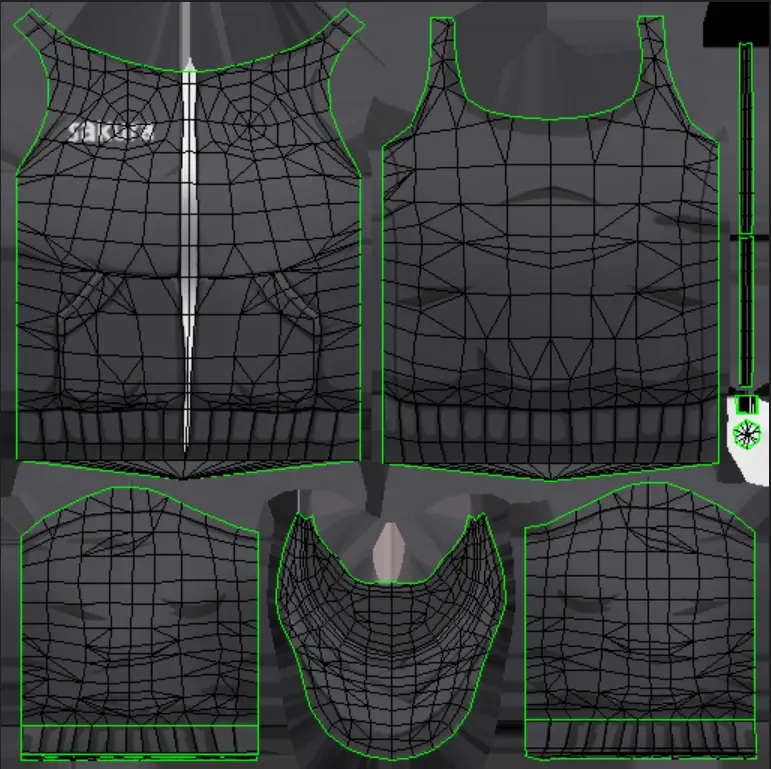
Texture Specifications
- Clothing materials are diverse, and different materials require slightly different textures. Only general specifications are introduced here. For details, refer to Clothing Materials
- Textures should be created based on the PBR workflow.
Texture Size:
- Recommended size: 512*512
- Maximum texture size should not exceed 1024*1024.
Resource Organization
Material Balls:
- Material naming must comply with the material slot specifications. Materials must be correctly assigned and named in 3Dmax, Maya, or other DCC software.
- The material ball for the nude model part must be named: Body.
| Part | Base Material Name | Transparency Material Name |
|---|---|---|
| Nude Body Part | Body | - |
| Upper Body | ClothUpper | ClothUpper_Mask |
| Lower Body | ClothLower | ClothLower_Mask |
| Gloves | Glave | Glave_Mask |
| Shoes | ClothShoes | ClothShoes_Mask |
- Incorrect naming may cause material display errors.
- For example: If the clothing material is named Body, it will be automatically recognized as the nude model during upload, and the nude model material cannot be changed.
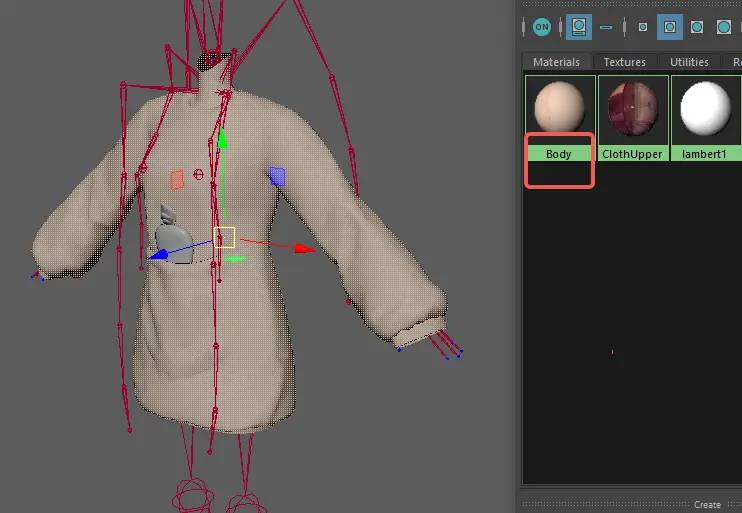
Model Check:
Check if the DCC software unit settings are in centimeters.
Check if the model coordinates are at the world coordinate center, with model coordinates at 0.0.0, and no scaling values.
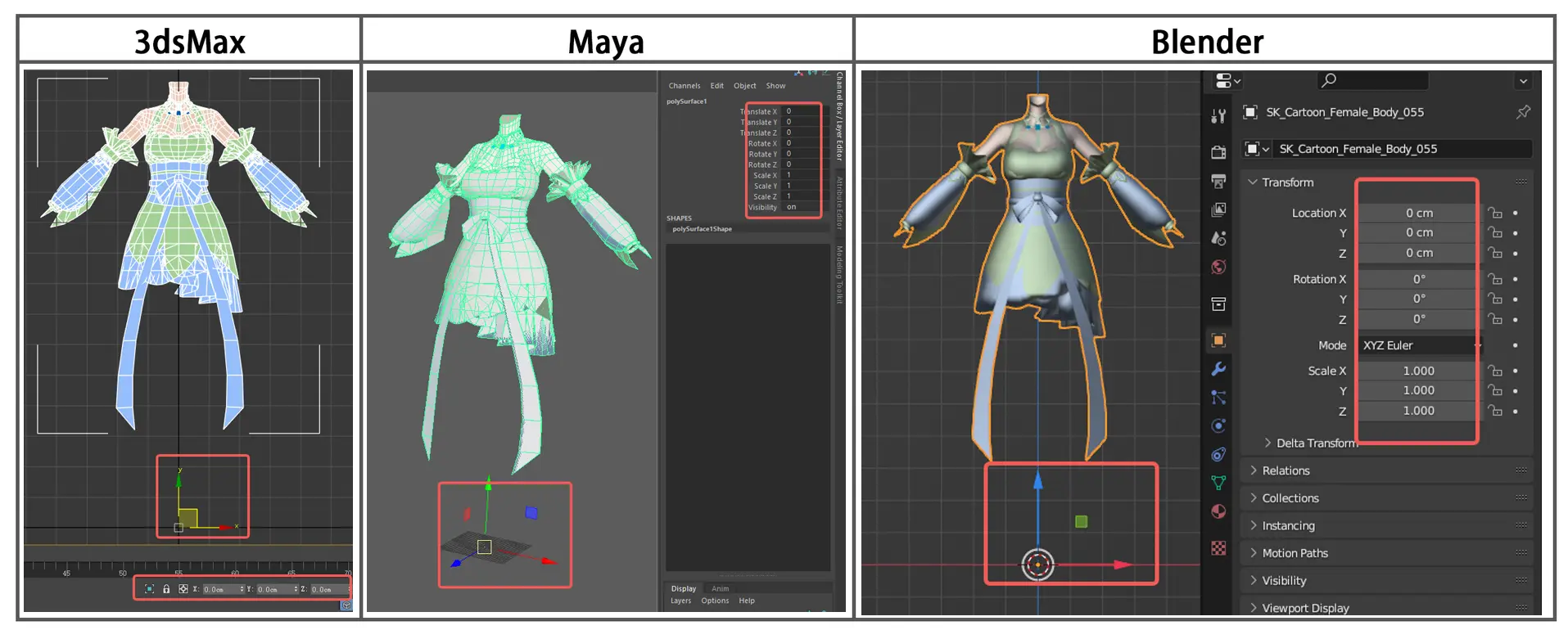
- Check the resource list and delete unused models, empty groups, etc.
- Check for incorrect double-sided faces, broken faces, broken points, and polygons with five or more sides.
- Verify smoothing groups are set correctly.
- Check the connection points between different parts to ensure the vertex normals of each part match the nude model.
- Check if each part has been assigned a material ball and if the material ball is named correctly.
- Check if the UV count is correct.
Completion:
- After completing the model and textures, you can proceed with rigging or animation production.
 Editor Doc
Editor Doc